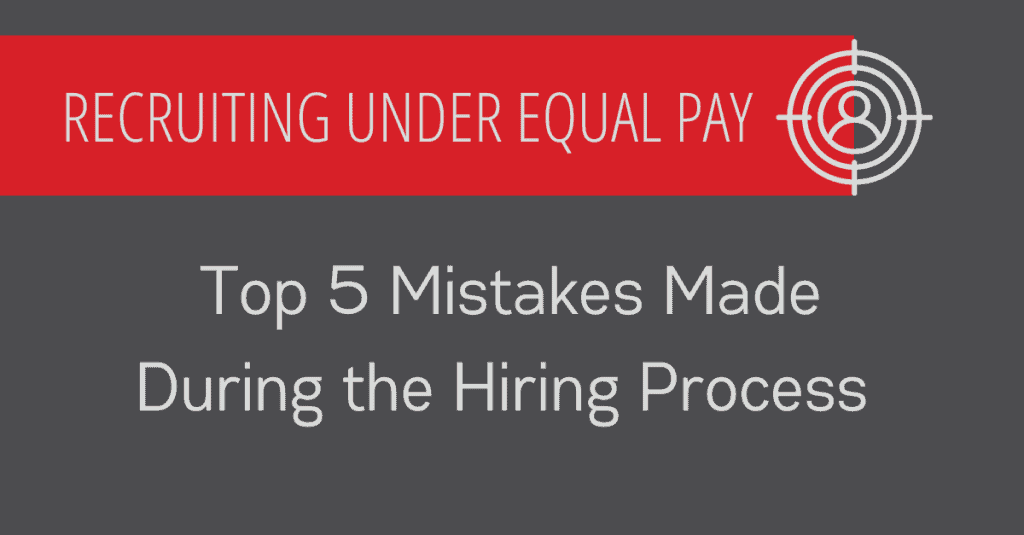
Posted September 20th, 2022 in Legal Insights with Tags The Equal Pay Advisor
Recruiting Under the Equal Pay Act: Top 5 Mistakes Made During the Hiring Process
Most recruiters and hiring managers are familiar with the concept of “prohibited questions” during the hiring process—topics the employer should avoid affirmatively raising during the interview to steer clear of potential discrimination. But as state and local governments pass legislation to strengthen equal pay protections, the list of thorny topics has only grown. Below, we break out some of the top equal-pay mistakes employers make during the hiring process.
- Asking for salary history. Dozens of jurisdictions across the country expressly prohibit employers from requesting salary history from job applicants as a way to remedy past discrimination. The best practice is for recruiters to reframe the question by asking about salary expectations for the new role.
- Falling short on required pay disclosures. A number of jurisdictions require employers to inform job applicants about the expected compensation range for a position. A new trend, most notably in New York City and Colorado, takes this up a notch and requires employers to post the minimum and maximum salaries in the job posting. Recruiters should review these requirements if hiring in a location with a pay disclosure law.
- Overlooking comparative roles. It’s difficult to set pay fairly without data about comparative roles. Hiring managers should review compensation for employees performing similar work and consider other relevant factors, including but not limited to starting compensation for other employees, the impact of inflation, working location, and cost of living.
- Not considering all forms of compensation. A prospective employee’s salary is only one part of the package. Candidates may negotiate other benefits, including stock options, commission rates, or fringe benefits. These forms of compensation are also fair game for an equal pay analysis.
- Delaying an equal pay analysis. A regularly scheduled equal pay audit makes it easier to make compensation decisions during the recruiting process. It gives hiring managers and recruiters the most recent, salient data on the organization and can save employers compliance issues down the road.
